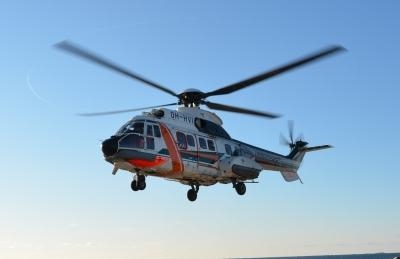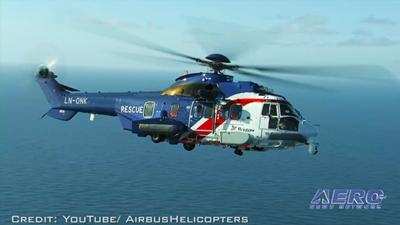Tue, Jul 11, 2017
Move Follows Extensive Investigation, Testing And Changes To The Helicopter And Its Maintenance
The U.K. and Norwegian aviation authorities have set out plans for the lifting of operating restrictions on H225LP and AS332L2 helicopters. The restrictions were imposed following the fatal accident of a H225 near Turøy in Norway in April 2016. The two helicopter types, popularly known as Super Pumas, were restricted from being used commercially by U.K. and Norwegian operators.

Both the U.K. Civil Aviation Authority and the Civil Aviation Authority of Norway have remained in close contact with EASA; U.K. and Norwegian operators; and with the manufacturer, Airbus Helicopters which has developed the modifications and enhanced safety measures for the type. Despite the helicopter being released back in to service by EASA in October 2016, the restrictions remain in place in the U.K. and Norway until these further enhancements have been made.
Changes and modifications made to the helicopter and its maintenance by Airbus Helicopters include:
- Change in the design by removal of the components that were susceptible to premature deterioration.
- Earlier replacement of components
- Design change to introduce an improved maintenance inspection method to detect any deterioration at an early stage.
- More frequent inspections
- Reduction in the thresholds for rejecting components based upon early signs of any deterioration.

The U.K. CAA said that helicopters will not begin flying immediately. A plan of checks, modifications and inspections needs to be undertaken before any flights take place. It will also be for operators and their customers to decide whether they wish to re-introduce the helicopters to service. In order to resume operations individual operators will need to supply safety cases to ensure that they have all the necessary measures (procedures, processes, tooling and training) in place for a return to service.
"This is not a decision we have taken lightly. It has only been made after receiving extensive information from the Norwegian accident investigators and being satisfied with the subsequent changes introduced by Airbus Helicopters through detailed assessment and analysis," said John McColl, Head of Airworthiness at the U.K. CAA.
“The safety of those who travel on offshore helicopter flights is a key priority for both the U.K. and Norwegian aviation authorities. We would not have made this decision unless we were convinced that the changes to the helicopters and their maintenance restore the required airworthiness standards.
“We continue to work with the helicopter operators, the offshore industries, international regulators, unions and pilot representatives to enhance offshore safety standards still further and all these parties are actively involved in ongoing discussions.”
(Source: U.K. CAA news release. Image from file)
More News
Airplane Bounced About 3 Ft Then Touched Back Down And Then, With No Brakes Applied, The Airplane Began Veering To The Left Analysis: The pilot entered the airport traffic pattern >[...]
Aero Linx: British Microlight Aircraft Association (BMAA) The primary focus within all aviation activity is SAFETY. In all aspects of our sport SAFETY must come first, whether it b>[...]
From SnF25 (YouTube Edition): William Wynne Builds Practical Aircraft Engines on the Corvair Platform Seeking an affordable alternative to the traditional aircraft engine options, >[...]
How To Get A Story On Aero-TV News/Feature Programming How do I submit a story idea or lead to Aero-TV? If you would like to submit a story idea or lead, please contact Jim Campbel>[...]
From 2023 (YouTube Edition): Bridge of CiES CiES Inc. is a Bend, Oregon-based designer and manufacturer of modular embedded aircraft systems and sensors. The company’s fuel-l>[...]
 NTSB Final Report: Aviat A1
NTSB Final Report: Aviat A1 ANN's Daily Aero-Linx (07.08.25)
ANN's Daily Aero-Linx (07.08.25) Classic Aero-TV: Fly Corvairs Reliable Engine Alternative
Classic Aero-TV: Fly Corvairs Reliable Engine Alternative ANN FAQ: Contributing To Aero-TV
ANN FAQ: Contributing To Aero-TV Classic Aero-TV: CiES Fuel-Quantity and e-Throttle Systems Praised
Classic Aero-TV: CiES Fuel-Quantity and e-Throttle Systems Praised




